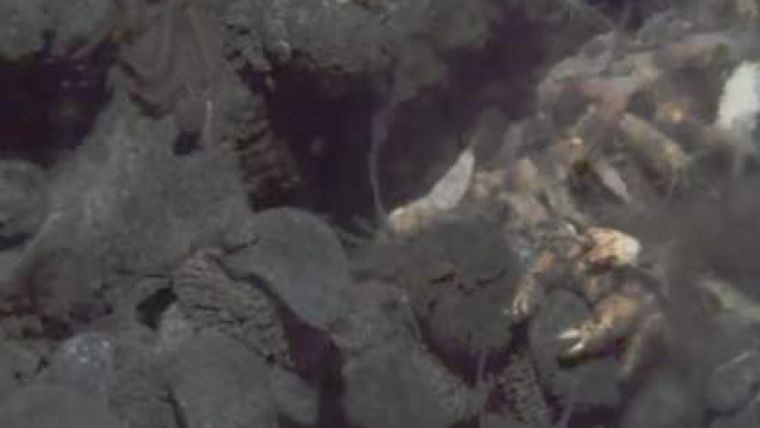Exotic Creatures Found at Deep-sea Vent in Indian Ocean
In the first ever expedition to explore and take samples from the 'Dragon Vent' in the south-west Indian Ocean, remotely operated submarines spotted yeti crabs, sea cucumbers and snails living around the boiling column of mineral-rich water that spews out of the seafloor. These discoveries were made by scientists from the University of Southampton, UK.
Marine biologist Dr Jon Copley said his team found animals that had not been seen in neighbouring parts of the oceans.
His team has found yeti crabs, normally living in the Pacific and for the first time observed in the Indian Ocean but different as they have short arms and the undersides are covered in bristles. They also found sea cucumbers, vent shrimps and scaly-foot snails. Sea cucumbers have previously only been seen at deep-sea vents in the eastern Pacific.
Deep-sea vents, also known as hydrothermal vents, are springs of superheated water that are powered by underwater volcanoes. They erupt from the sea bed and are usually found a few miles under the sea surface. The scalding temperatures and rich mineral content of the water give rise to vast rocky chimneys, which have been found to support a wide variety of life forms.
The survey was part of a larger expedition to study underwater mountains aboard the RRS James Cook, which sailed from Cape Town on 7th November 2011 and returned to South Africa on 21 December 2011. The exploration of the Dragon Vent took place in an intense three-day burst in the middle of the trip.
Copley's team took hundreds of samples of 17 different creatures, all of which are now being shipped back to his lab for detailed morphological and genetic examination. "Chances are that there will be several that are new species," he said. "We won't know for sure until we get them back into the lab and analyse them."
Copley's work builds on a Chinese expedition in 2007 that pinpointed the hydrothermal vents on the southwest Indian ridge for the first time. This chain of undersea volcanoes joins the mid-Atlantic ridge to the central Indian ridge. This part of the volcanic ridge is less volcanically active, so scientists think hydrothermal vents should be fewer and more scattered here. It therefore raises the question of whether life there is significantly different.
Copley said that characterising the life at the world's hydrothermal vents was a race against time. China was granted a licence by the UN International Seabed Authority for exploratory mining at deep-sea vents on the southwest Indian ridge. The vent chimneys are very rich in copper, zinc, gold and uranium. But we have no idea what's actually living there.














